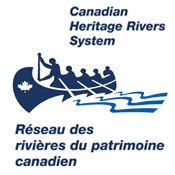Facilities
Activities
Please note: Availability of some facilities and activities may be restricted to specific areas of the park, may be ecologically dependent, or may be seasonally weather dependent.
General Information
Regional Health Unit for this Park: North Bay Parry Sound District Health Unit
Phone:
(705) 744-2276
Size: 14142.00 ha
Year established: 1970
Park Classification: Waterway
Address:
c/o Samuel de Champlain
P.O. Box 147
6905 Highway 17 East
Mattawa, ON
P0H 1VO
What You'll Like:
Stretching between North Bay and the Town of Mattawa on the Quebec border is the historic waterway of the Mattawa River. This was once an important route for voyageurs, trappers and loggers—and before them for the Indigenous people who began inhabiting the region more than 6000 years ago. In 1970, the Ontario government protected a substantial portion of the river—from the eastern end of Trout Lake downstream to Samuel de Champlain Provincial Park—by designating it the first waterway park in Ontario. In 1988, the federal government recognized the Mattawa’s national historic significance by naming it a Canadian Heritage River. Glaciologists have determined that the Mattawa River served as a drainage channel for the inland, meltwater lakes of 10,000 years ago, and was a much larger river than it is today. Evidence of erosion by the ancient river may be seen along cliff faces and canyon walls, many metres above present flood levels. The Mattawa flows along a fault line estimated to be 600 million years old, through a series of channels, lakes and ponds. Its route features several stretches of rapids, an eight-metre waterfall, and 14 portages.
Park Facilities and Activities: Veteran canoeists may experience an authentic voyageur expedition along the spectacular Mattawa. Most of the 14 portages in the park are fairly short, well-marked and cleared. Experienced canoeists in sturdy craft can run some of the rapids when water levels are high. The exhilaration of white-water rafting may be followed with a relaxing picnic along scenic stretches of the riverbank. One such stretch is Grasswells Point, where swimming may also be safely enjoyed. Campsites, some with privies, are dotted along sections of the 122-metre ribbon of land on either side of the river that comprises the waterway park. Private campgrounds are also accessible. For part of its length, the river flows through Samuel de Champlain Provincial Park which offers more amenities.
A detailed map of the river is available from the Natural Resources Information Centre of the Ministry of Natural Resources in Toronto, or from the MNR District Office in North Bay.
Location: West of the Ottawa River along the Mattawa River. Highway 17 runs parallel to the river and provides numerous points of access to the park, as does Highway 63 in the Trout Lake area on the park’s west side.
